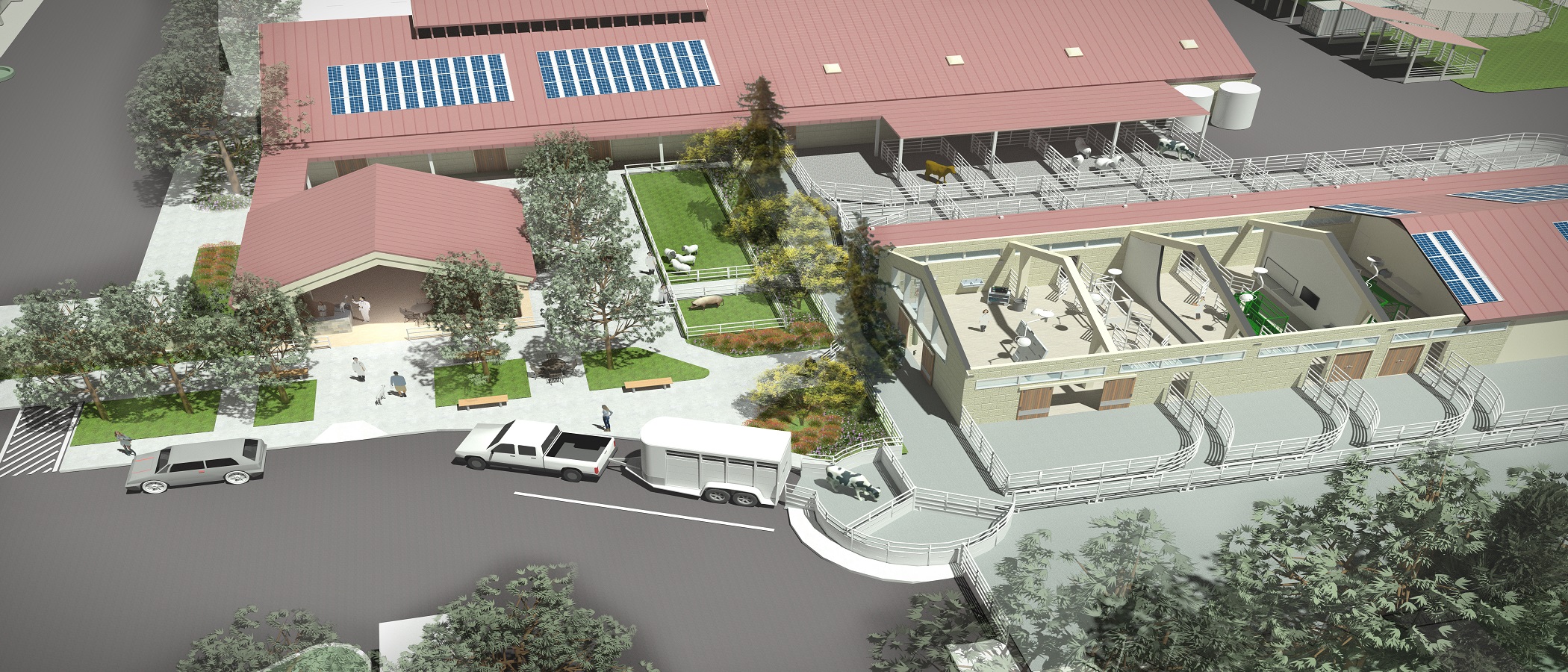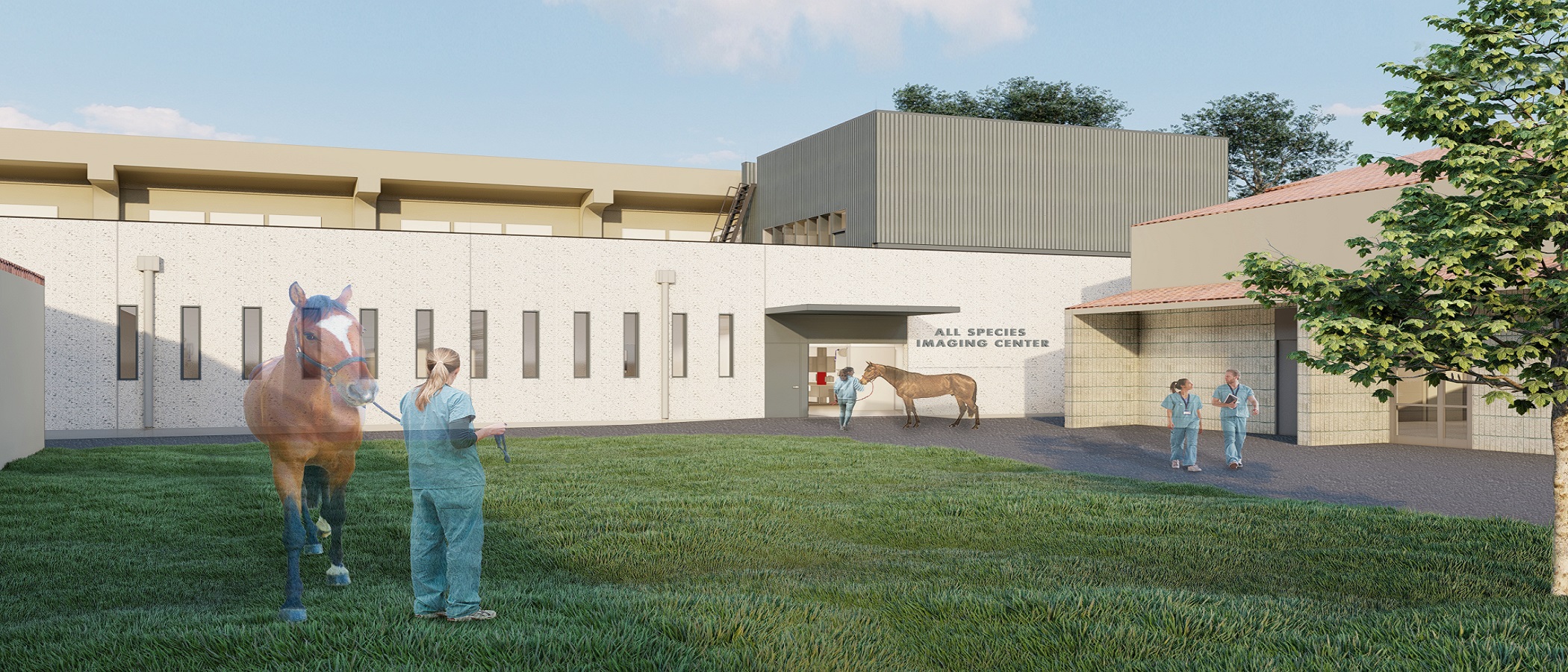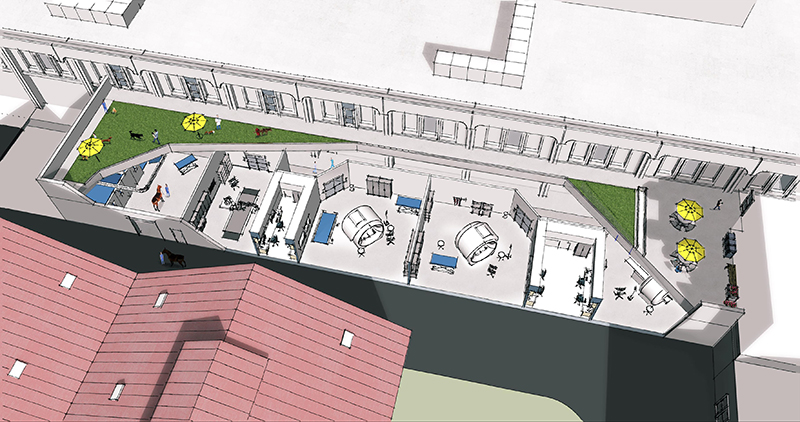The Veterinary Medical Complex will be unlike any other veterinary facility.
Built to promote clinical innovation, transformational research discovery and compassionate healing, each animal and client will receive attentive and personalized care in the center of a world-leading biomedical research hub.
The facility will allow our veterinary clinician-scientists to contribute to each patient’s outcome, as they set new standards for veterinary medicine.
It will provide a rich learning environment for the nation’s largest veterinary residency program, including the world’s largest for diagnostic. From behavior medicine to cardiology, more than 30 clinical specialties will be supported by an extensive complement of clinical laboratories, to underpin the comprehensive and innovative patient care advantage of the Veterinary Medical Complex.
Project Development - Phase 1
Phase 1 of The Veterinary Medical Complex currently included nine project groupings for construction:
- Livestock and Field Services Center
- All Species Imaging Center
- Equine Performance Rehabilitation Center
- Large Animal Support Facility
Later phases of the project will include: Equine Surgery and Critical Care Center, Remodeled Small Animal Clinic Examination Rooms, Small Animal Clinic East Wing, Small Animal Clinic West Wing, and Community Practice Consolidation.

Livestock and Field Services Center
The Livestock and Field Services Center will be the first patient care area to come online. The center has been designed in consultation with Temple Grandin, Ph.D., well known for her groundbreaking work in engineering humane animal facilities, and is a fellow in the Society of Biological and Agricultural Engineers. Emphasizing modern concepts in animal welfare, Dr. Grandin partnered with us to create the best possible environment for livestock handling, care, and clinical teaching.
Delivery of veterinary services for livestock producers and companion livestock owners has evolved since 1946 when large-scale operations preferred on-location veterinary care delivered through ambulatory services. Increasingly, the client base of the Large Animal Clinic comes from owners of high-value production animals and owners who keep livestock as companions. It is more cost-effective for these animals to be brought to the Large Animal Clinic for care.
The livestock handling facilities at the Large Animal Clinic were originally designed to handle dairy cattle, which are larger and more docile than the beef cattle now seen commonly in the hospital practice. Upgrades and modifications to the facilities are now required to improve student and clinician safety and provide animal patients with outstanding veterinary care.
Veterinary students gain valuable experience in livestock medicine during fourth-year clinical rotations. For those actively pursuing a livestock career path, the rotations also are absolute necessities. Many aspects of the rotations enhance the future of students who pursue other avenues in veterinary medicine.
By providing a safe and controlled environment with a diverse caseload, rotations through the Livestock Medicine Service allow students to participate in surgeries such as castrations, common abdominal surgeries, C-sections and leg fracture repairs. This rotation also offers students additional experience with radiology, ultrasound, endoscopy, and even laparoscopy, CT and MRI.

All Species Imaging Center
Pivotal to all hospital clinical specialties, the All Species Imaging Center will be centrally located to serve all patients, large and small. The strategic placement of imaging technology and expertise will expedite diagnosis and patient care, reduce stress and wait time for our patients and optimize operational efficiencies.
Advanced imaging is fundamental to patient care and discovery across multiple disciplines including surgery, oncology, neurology, ophthalmology and many other clinical specialties. New imaging modalities such as positron emission tomography (PET) will enhance our technical advantages and strengthen the recruitment of excellent faculty and staff. This new center will bring together veterinarians, physicians, researchers and other scientists across multiple disciplines to advance innovation in imaging to enhance the health of animals and people.
The All Species Imaging Center, staffed by the largest veterinary diagnostic team in the world, will be at the cutting edge of detecting, diagnosing and treating disease and trauma. By utilizing information learned through research, radiologists and clinicians at the Veterinary Medical Center will continue to advance the care and rehabilitation of all animals.

The center's imaging modalities will include:
- Radiography (X-ray)
- Computed Tomography (CT)
- Nuclear scintigraphy
- Ultrasound
- Magnetic Resonance Imaging
- Positron Emission Tomography (PET)
Sports medicine specialties are utilizing the latest technological advances to improve lameness detection and objective assessment of gait. The key to the successful resolution of lameness is accurate diagnosis and determination of primary versus secondary sources of pain. Early detection of problems— before the horse is sidelined—improves return to athletic function and reduces the likelihood of re-injury.
Our clinicians advance stem cell treatments by taking advantage of clinical developments from the work of the Veterinary Institute for Regenerative Cures. Stem cells derived from equine bone marrow and fat direct the immune response to damaged tissue and help to organize healing. Radiologists are pioneering the use of imaging technology to track the activity and influence on stem cells in acute tendon lesions in horses.

Equine Performance and Rehabilitation Center
The Equine Performance and Rehabilitation Center will transform our equine services with a new arena and gait analysis capability for lameness evaluations. With the opportunity to observe horses performing under saddle, our equine specialists will be able to better detect and treat the underlying injury or medical condition. This exciting facility design includes state-of-the-art force-plate and video analysis not available in many veterinary settings and opens a new avenue to improved performance through the application of clinical research.
Along with an Equine Surgery and Critical Care Center (as part of a later project phase), these new facilities will allow us to enhance our offerings of the most progressive surgical techniques available for our equine patients. Minimally-invasive approaches such as arthroscopy, laparoscopy, thoracoscopy, endoscopic laser surgery, and lithotripsy will lessen tissue damage encountered in traditional methods and reduce recovery time following surgery.

